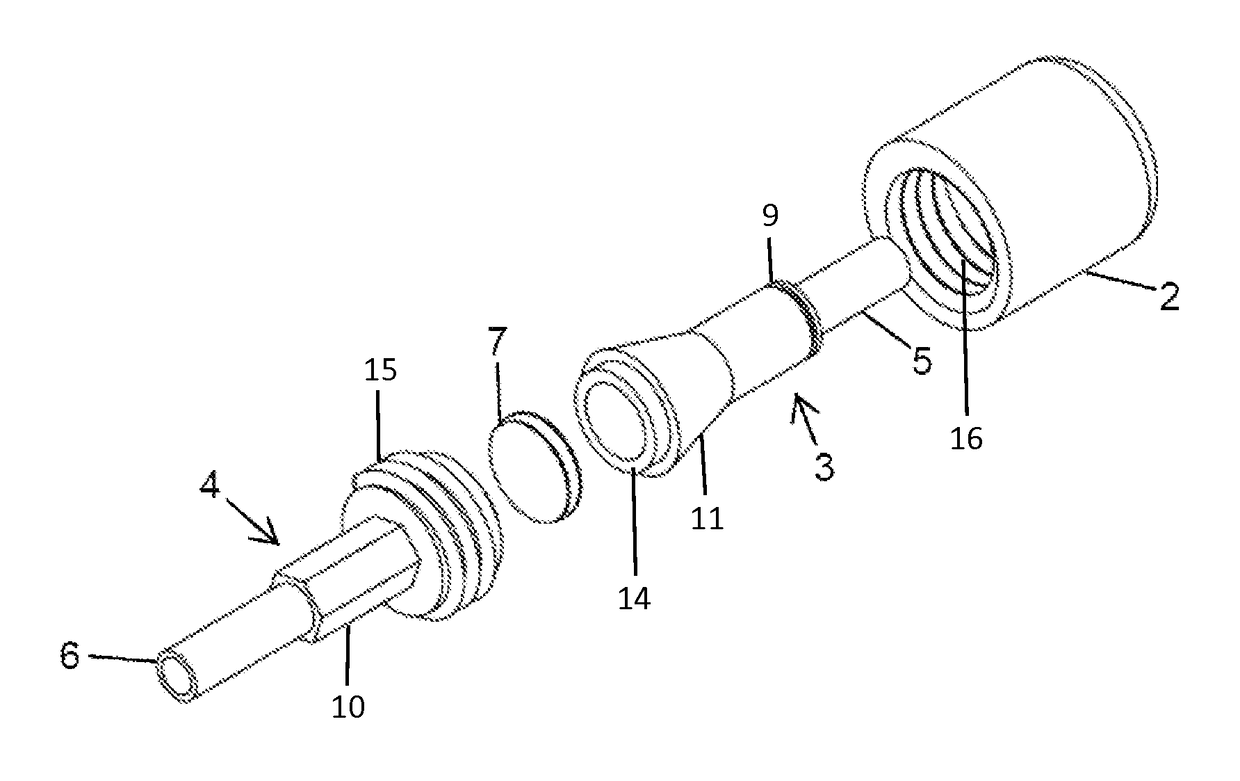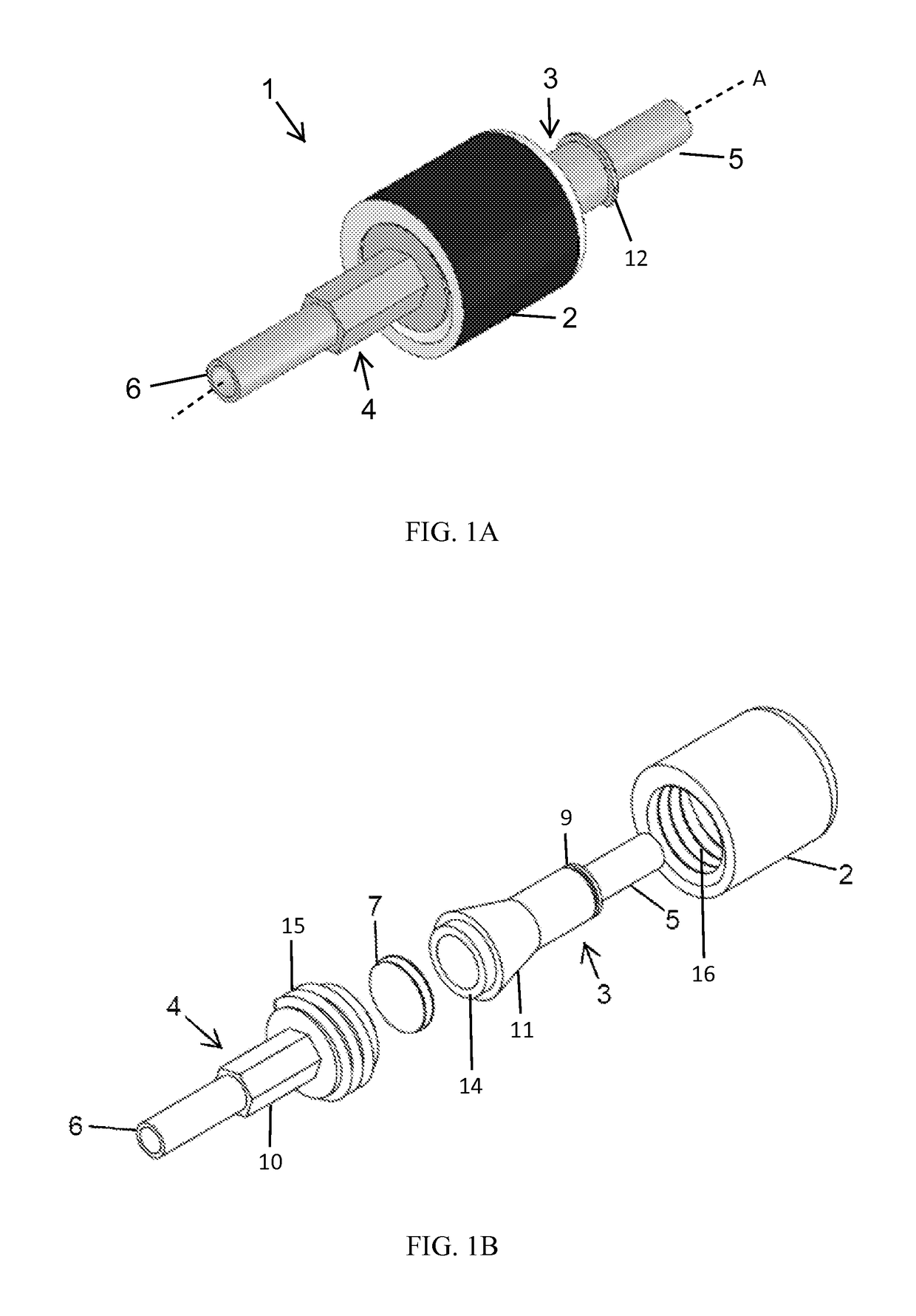Liquid-free sample traps and analytical method for measuring trace level acidic and basic AMC
a sample trap and sample technology, applied in the field of liquid-free sample traps and analytical methods for measuring trace level acidic and basic amc, can solve the problems of increasing detection limits, inconsistent data, and the inability of most advanced monitors to achieve detection limits in the low parts-per-trillion range, and achieves easy manufacturing and preparation. , the effect of high capture efficiency
- Summary
- Abstract
- Description
- Claims
- Application Information
AI Technical Summary
Benefits of technology
Problems solved by technology
Method used
Image
Examples
Embodiment Construction
[0028]A description of example embodiments of the invention follows.
[0029]As used herein, the singular forms “a”, “an” and “the” include plural referents unless the context clearly dictates otherwise. Thus, for example, reference to “an airborne molecular contaminant” can include a plurality of airborne molecular contaminants. Further, the plurality can comprise more than one of the same airborne molecular contaminants or a plurality of different airborne molecular contaminants.
[0030]Unless defined otherwise, all technical and scientific terms used herein have the same meanings as commonly understood by one of ordinary skill in the art. Methods and materials similar or equivalent to those described herein can be used in the practice or testing of embodiments of the present invention. Nothing herein is to be construed as an admission that the invention is not entitled to antedate such disclosure by virtue of prior invention. “Optional” or “optionally” means that the subsequently desc...
PUM
| Property | Measurement | Unit |
|---|---|---|
| pore size | aaaaa | aaaaa |
| time | aaaaa | aaaaa |
| thickness | aaaaa | aaaaa |
Abstract
Description
Claims
Application Information
 Login to View More
Login to View More - R&D
- Intellectual Property
- Life Sciences
- Materials
- Tech Scout
- Unparalleled Data Quality
- Higher Quality Content
- 60% Fewer Hallucinations
Browse by: Latest US Patents, China's latest patents, Technical Efficacy Thesaurus, Application Domain, Technology Topic, Popular Technical Reports.
© 2025 PatSnap. All rights reserved.Legal|Privacy policy|Modern Slavery Act Transparency Statement|Sitemap|About US| Contact US: help@patsnap.com



